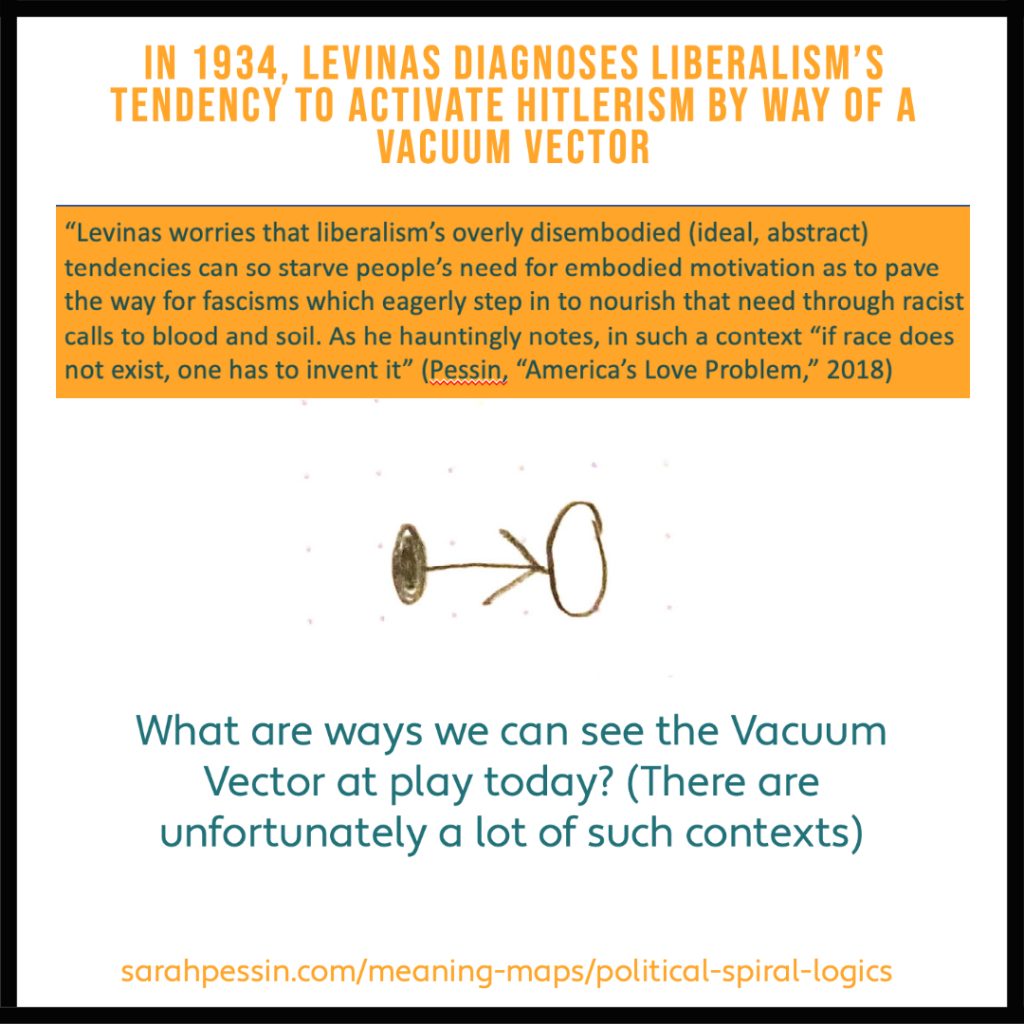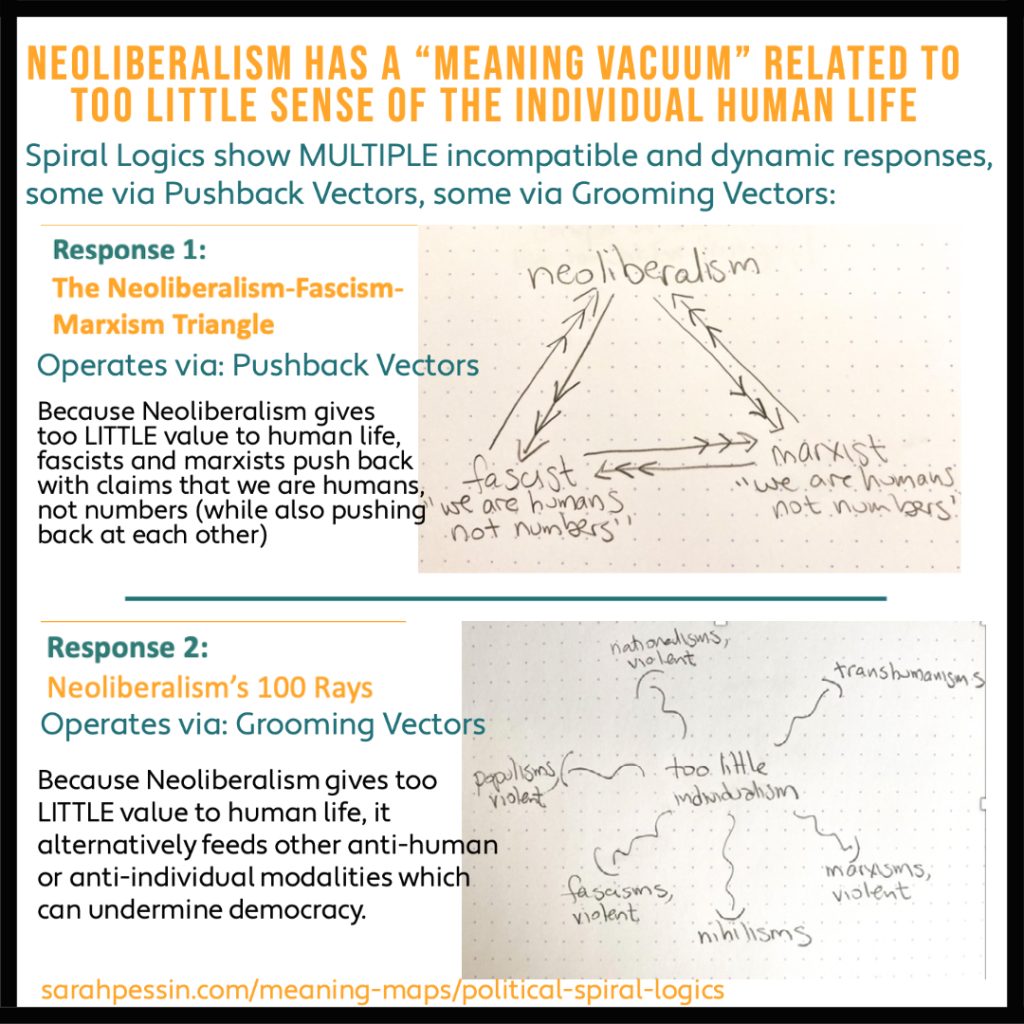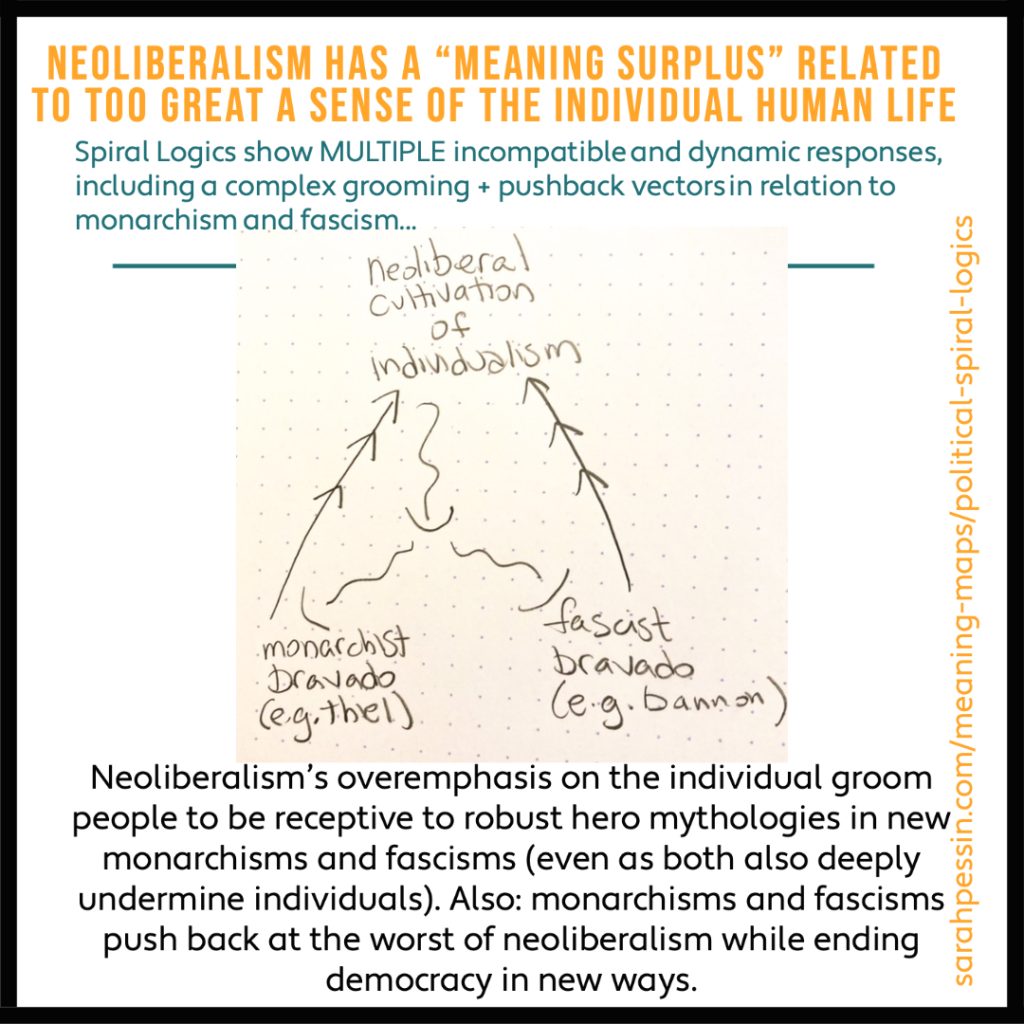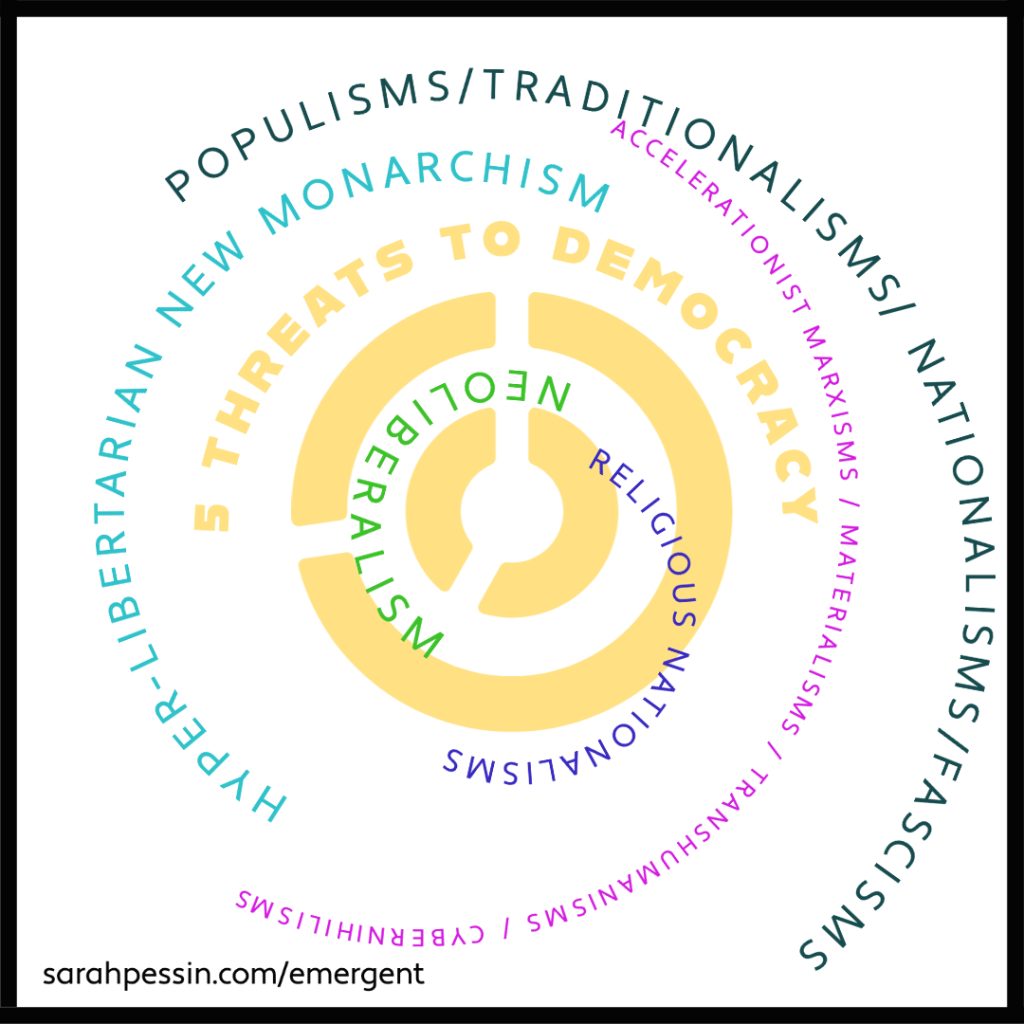Politics moves in embodied non-linear ways. “Spiral Logics” is a diagnostic tool for better assessing and addressing the ins and outs–the vectors– of political motions. It helps you track the complexity of the problem so that you know what you’re actually trying to solve before you start solving for the wrong thing. It also helps you inflect your solution set to try to avoid foreseeable bad consequences. (Of course, every solution will also lead to unforeseeable bad consequences–which is why taking a “pivot-prone,” “iterative,” “2.0” approach is always key).
[Where are these ideas coming from? The tool is my own but it is based on my years of research into logics of embodiment and paradox, including paradoxical logics of embodiment in the works of Merleau-Ponty and Levinas, paradoxical logics of emanation in late ancient and medieval Greek, Jewish, Islamic, and Christian Pythagoreanisms and Neoplatonisms, the affective politics of William Connolly, and Anzaldua’s work on hybridities and borderlands. I am also thankful to the many colleagues and students who have helped refine and who continue to help refine this tool].
Note: “Logics” is meant to capture the internal and external ordering of a motion system, and has nothing to do with “Formal Logic”. In fact, because it is an embodied/affective set of motions, it often defies ordinary expectations. Spiral Logics in this sense are often “illogics.”
As for “spiral,” separate from the shape it’s a concept used in a range of ancient thought traditions to signal deep paradoxical logics pulsing at the core of the everyday. I use the term in that sense.
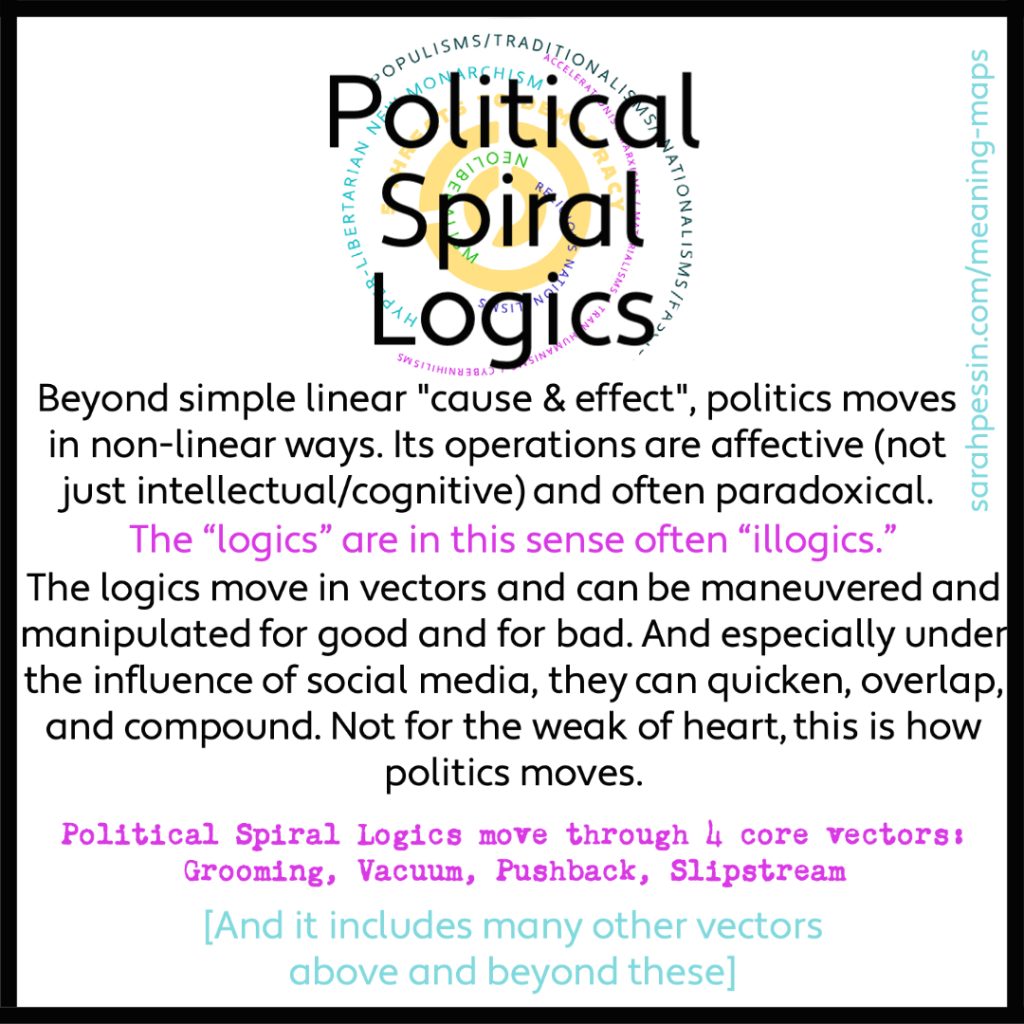
The 4 Core Vectors:
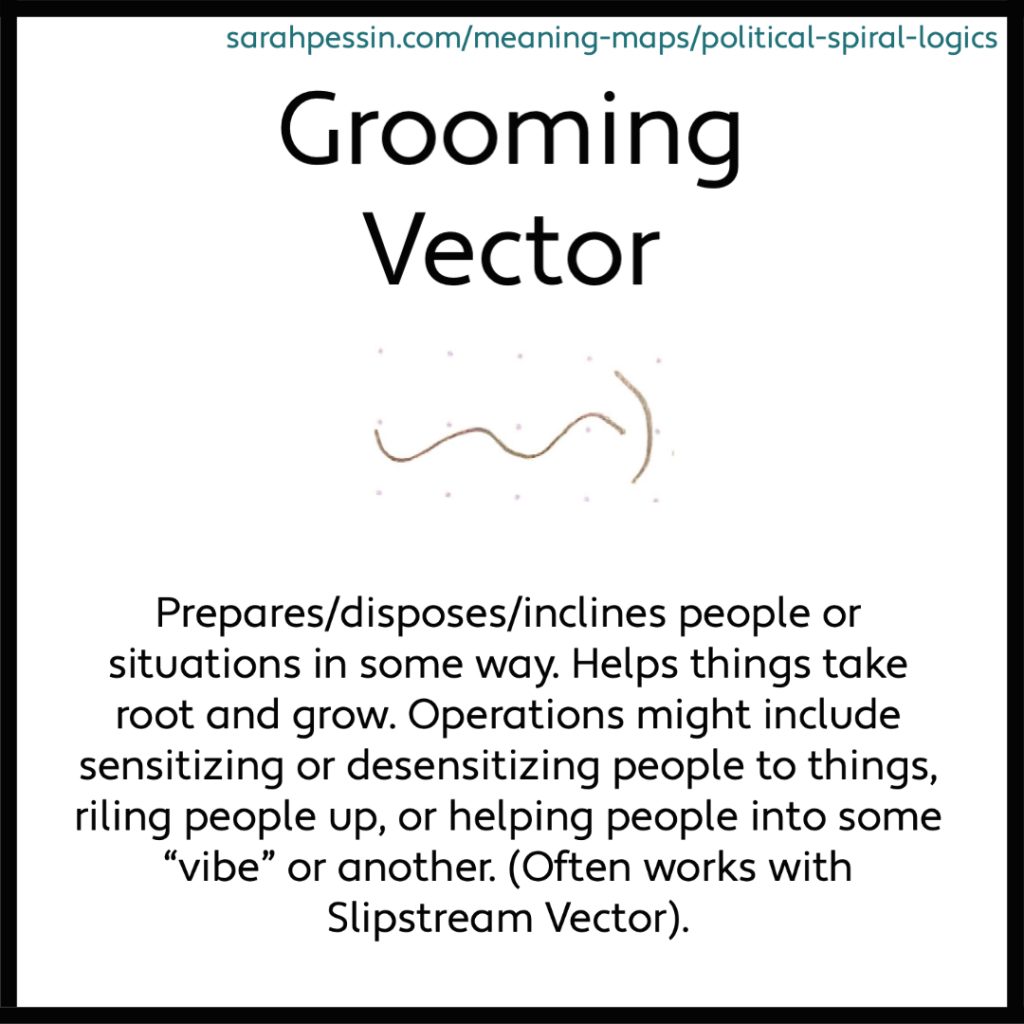
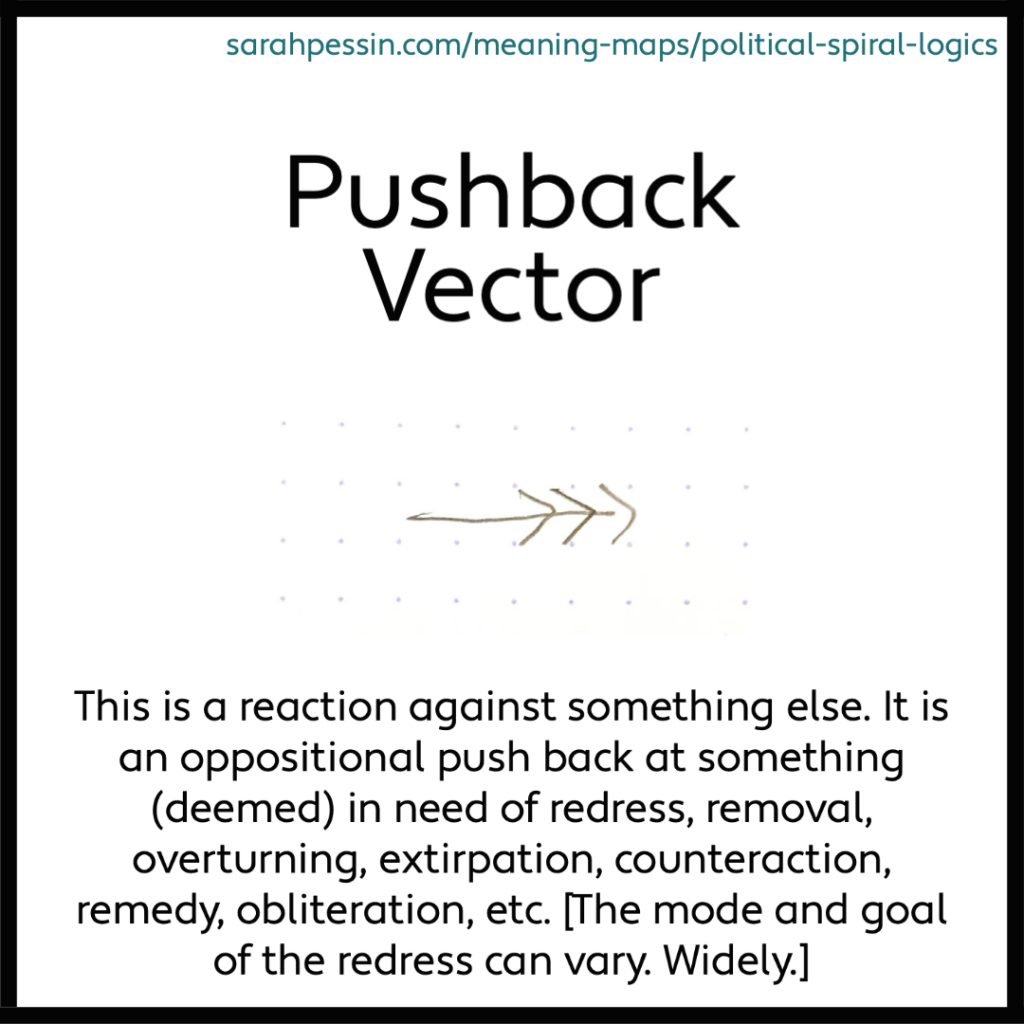
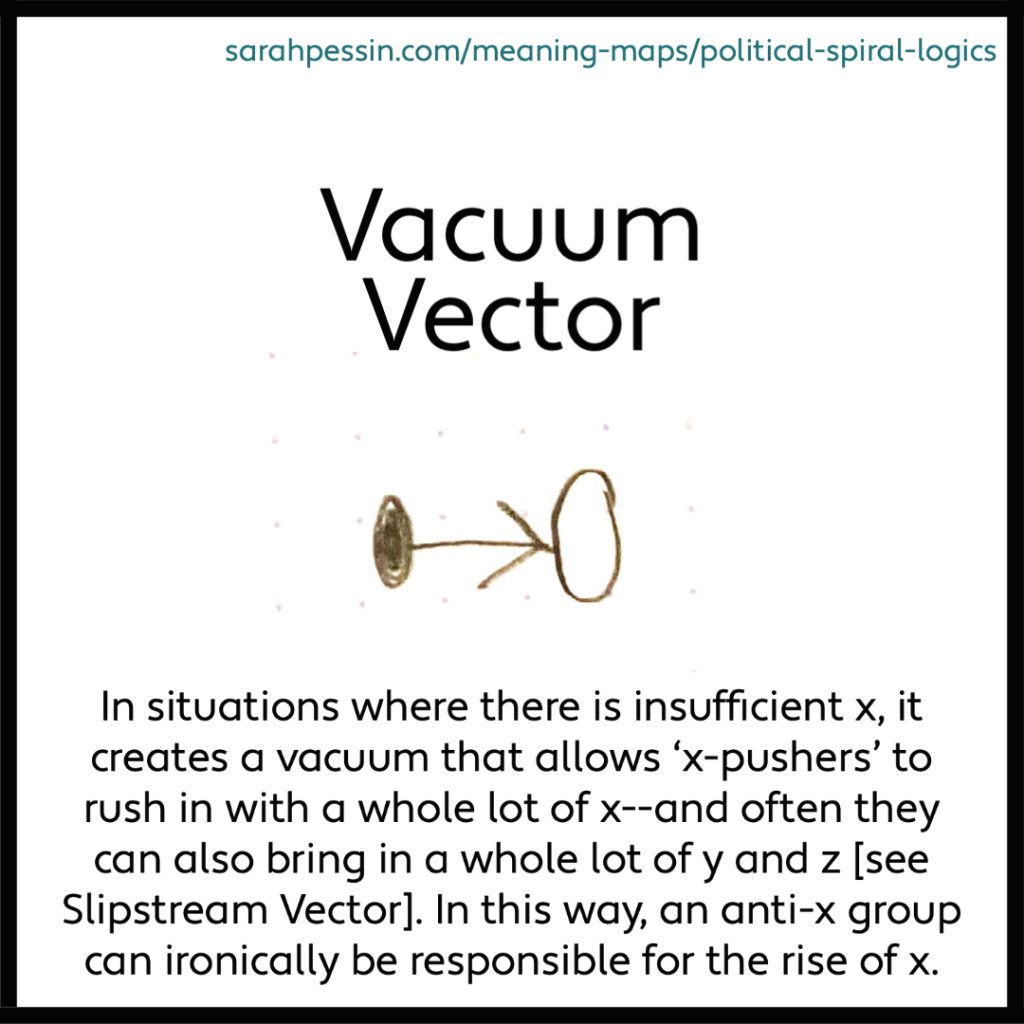
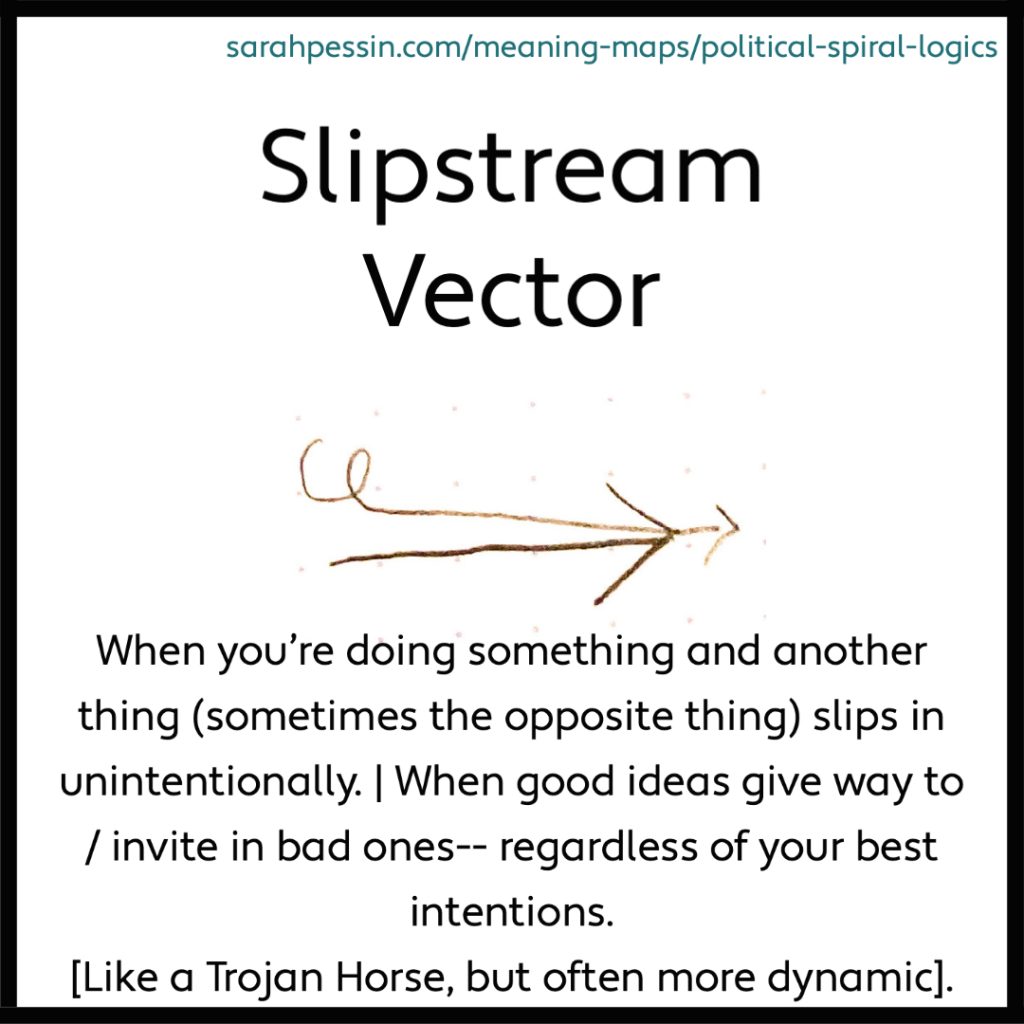
There are at least 5 current threats to democracy strengthening each other by way of Spiral Logics.
Read more here.
And here are some starting examples of how to use the vector symbols for applied analysis and strategizing:
